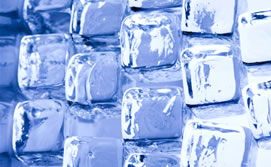This research, published in the scientific journal Nature Materials and inspired by the Kyoto Protocol, intends to renew current refrigeration systems, that are based on the compression of gasses hazardous to the atmosphere.
The search for materials showing large caloric effects close to room temperature is one of the paths being followed to develop new refrigeration systems. Until now, the most promising materials in the refrigeration field were so called giant magnetocaloric materials, which change temperature with the application of an external magnetic field.
Two teams at the Barcelona Knowledge Campus, one from the University of Barcelona (UB) and the other from the Technical University of Catalonia (UPC), in collaboration with a group from the University of Duisburg-Essen (Germany), have developed a new solid material that shows caloric effects applying hydrostatic pressure (solid state barocaloric effect) through a high pressure system. This is unique in Spain and was designed by the UPC. This work shows that the application of moderate hydrostatic pressure to a nickel-manganese-indium alloy (Ni-Mn-In) produces results that are comparable to the best obtained from magnetocaloric materials.
In addition to the barocaloric affect already mentioned, the Ni-Mn-In alloy also has an inverse magnetocaloric effect. Thus there exists the possibility of combining the magnetic field with the hydrostatic pressure to produce a caloric effect, which would permit using different parameters to control temperature. That is to say, with this new material it is possible to monitor the pressure and magnetic field in order to better control the state change at a desired temperature.
